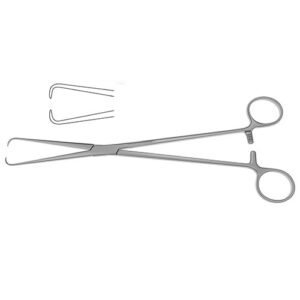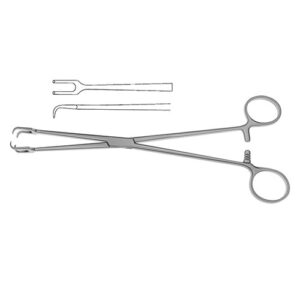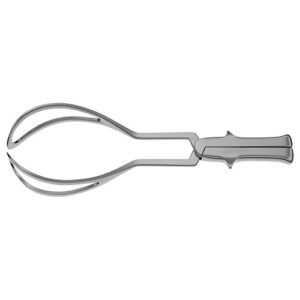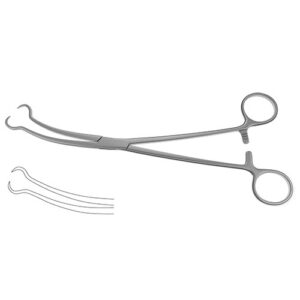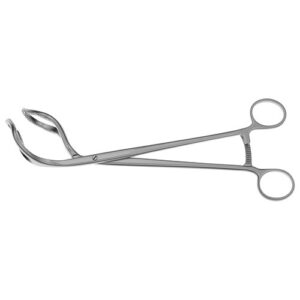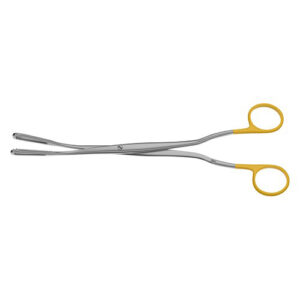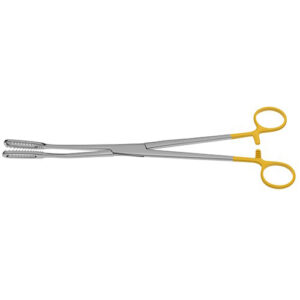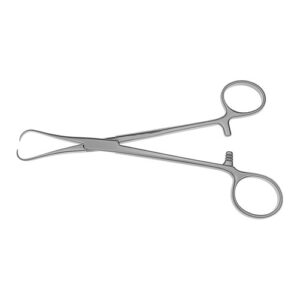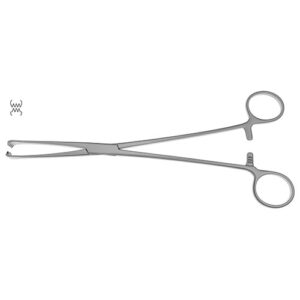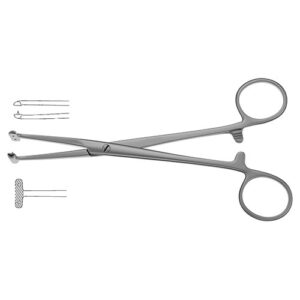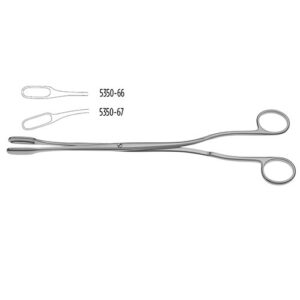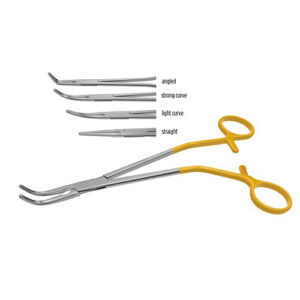Schroeder Tenaculum Forceps
Schroeder Tenaculum Forceps are commonly used in surgery to hold blood vessels or steady the cervix and uterus. The forceps feature sharp pointed hooks at the tips of ring handles for comfortable and controlled use. Schroeder Tenaculum Forceps are available in two sizes to accommodate a wide range of cases.
Schroeder Vulsellum Forceps
2x2 prongs, 10.0 mm wide, 10" (25.0 cm)?Schroeder Vulsellum Forceps feature 2X2 inward pointed prongs to grip the uterus during surgical procedures. The forceps also feature ring handles for a comfortable and secure grip. They are available straight or curved on flat to accommodate a range of cases.
Simpson Obstetrical Forceps
Skene Tenaculum Forceps
curved to side, 9-1/2" (24.1 cm) ?Skene Tenaculum Forceps are designed for use in surgery to seize blood vessels or to steady the cervix and uterus. The forceps feature ring handles for a comfortable and secure grip. The forceps are available in 1X1 or 2X2 prongs to accommodate a wide range of cases.
Somer Uterine Elevating Forceps
serrated jaws, curved to side, 9-1/2" (24.0 cm)? ?Somer Uterine Elevating Forceps are commonly used to extract tissue, tumors, or polyps from the uterus by elevating the vaginal wall. The clamps at the end of the ring handles feature serrated jaws to firmly grasp the tissue to be removed. The clamps are curved to the side to optimize visualization during procedures.
Sopher Original Ovum Forceps
Sopher Ovum Forceps
Sopher Ovum Forceps are commonly used to properly remove pieces of placenta or products of conception from the uterus to prevent infection. The flat blades are serrated and hollow to firmly grasp the tissue to be removed. The forceps are available in various lengths with or without ratchet locking on the ring handles to accommodate a wide range of cases.
Staude-Moore Tenaculum Forceps
Teale Vulsellum Forceps
Willett Placenta Praevia Forceps
7-1/2" (19.0 cm) ?Willett Placenta Praevia Forceps are used in cases of placenta praevia by grasping the scalp of the child with the flat grooved forceps blades and applying continuous traction on the head. This produces a pressure on the placenta to control hemorrhage. The ring handles feature a lock mechanism allowing the obstetrician to use the instrument comfortably and with ease.

